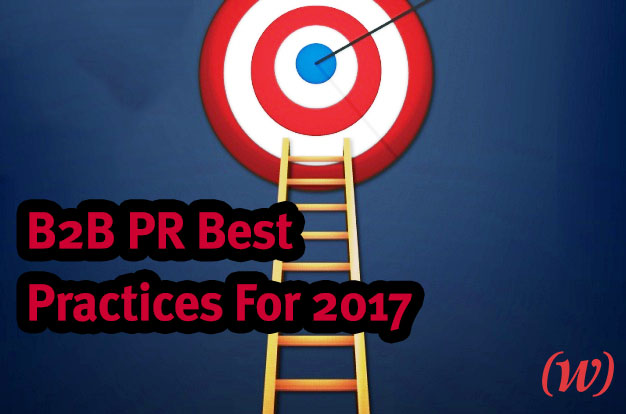By Chance Shay─ Director B2B and Infrastructure Development
Twitter: @ChanceShay
“Why aren’t sales through the roof? We’re the best in our industry.”
If I had a dollar for every executive that’s thought this to his or herself (or said it out loud), I’d be able to retire. They eventually come to the conclusion that it’s simply because the people who should be buying their product or service just haven’t heard about them. To a great degree, they’re right. The obvious solution to this, of course, is to tell these people about their brand and everything the company does.
The solution to attracting, closing and retaining new customers isn’t to tell people about the product or service, it’s to show that the product or service solves their problem better, faster, cheaper and with less headache than anything else out there. This is even more important for B2B brands, whose customers are naturally more discerning. In fact, 60 percent of all companies choose B2B vendors after actively trying to solve a problem and researching solutions. For B2B brands, this means the more difficult question becomes: how do we show our customers that we’re the best solution for them?
Because there are so many factors to account for- the industry, competitors, market conditions, decision makers, etc.- there is no short answer to this. Truth is that audiences are more fragmented than ever. So to help decide where to stack your chips, here are five marketing pitfalls to ditch and five fresh techniques B2B brands should incorporate into their PR and marketing strategy.
Don’t: Focus exclusively on content marketing
- One dimensional marketing hasn’t been effective since salesmen walked door to door in the 60s. Don’t get me wrong, content marketing is a great way to increase the odds of your brand being discovered by those actively looking for a solution like yours. A brand just can’t put all its eggs in one basket.
Do: Utilize a comprehensive and diversified communications strategy
- Ever heard of the PESO Model? It’s an acronym that represents the four types of communication channels: Paid (channels you have to pay for), Earned (like media), Shared (essentially social platforms) and Owned (channels a brand controls). It’s a model that works well for B2B brands because it provides an easy to follow framework. Content marketing falls under the Owned channel, meaning that a brand only doing content marketing is missing 75% of the communication opportunity. Even as a true PR evangelist I will tell you that it’s unrealistic to think that earned media is all you need to reach your growth goals. Competing for attention is harder than ever because of where stakeholders get information (and thus how they’re influenced) is fragmented. B2B brands need to strategically integrate all of their communication channels in order to holistically cultivate prospects and beat the competition.
Don’t: Get press coverage and let that be that.
- That’s like qualifying for the New York City marathon but then not running another day before the race. Landing coverage in an outlet with a readership of 250,000 does not mean a quarter million people saw your article. It means there was an opportunity that 250,000 readers could read about your post. Don’t let the value from all the hard work that went into identifying, securing and coordinating the piece end once it’s published.
Do: Promote your press
- This is where having an integrated communication plan kicks in. Anybody in sales will tell you that they make contact with prospective customers at different cycles of the sales cycle. Make their job easier by showcasing press that both differentiates and helps (soon to be) leads evaluate your product. Showcase your press on social channels, your blog, newsletters and trade show materials. You can even include it in your email signature and in presentations by (including screen shots of headlines and any awesome comments the article received).
Don’t: Only write white papers to show thought leadership
- White papers and articles for peer reviewed journals require a lot of effort, but they’re great tools to showcase how talented a team a brand has. However, often times the paper is read by other smart people working in a similar fashion as the writer, not the target audience. Luckily, there are new ways to demonstrate to potential customers that a brand has a team of experts.
Do: Be a conversation starter
- While white papers are great at providing information, conversations help develop relationships, build trust and can be information. If you know your audience, you know what they’re interested in, where they get information and what strikes a chord in them. Show that you know this by heading to a forum (likely LinkedIn groups) and start a conversation around topics relevant to your audience. Write a headline you think will make your audience’s eyes bulge. Pose a provocative question or offer an opinion that is against the grain. Choose a topic you know the audience will want to opine about. Remember, the goal is to first get them talking and then you can jump in with expert input. Don’t be promotional or salesy. React to and opine, not promote and push. I feel like this goes without saying but you can visit any LinkedIn group and see a number of smart people breaking this cardinal rule.
Don’t: Wait to be invited to speak
- Every brand and person operates within their own bubble. Things that are a big deal in one bubble aren’t even noticeable in others. Some brands make the mistake of thinking they (or their leaders) are such a big deal that phones will be ringing with requests to present and speak. Even if a brand does get invites to share thoughts at certain events, they could be missing out on an opportunity to parlay that into additional exposure.
 Do: Be your own biggest cheerleader
Do: Be your own biggest cheerleader
- Sometimes doing great work is enough to get noticed, but often times you have to be like Ron Burgundy and tell people to come look at how good looking you are. Use great press coverage and presenting on past panels to secure new speaking opportunities. One idea is to use an article as the center piece of a pitch to present on a similar theme or trend. This shows that you are indeed an expert and gives you credibility. If you’ve been included as an expert on a certain topic or have a published by-lined article forecasting a trend that materialized, you’re a great pick to speak about that topic at a conference or trade-show. For people whose job is to select panelists and presenters, their goal is for attendees to say, “that presenter blew me away.” Help them help you.
Don’t: Think you have “an audience”
- Even if you think you have a “target audience” you’re wrong. Truth is that for most brands (with the exception of the most narrowly niche companies out there) there are many segmented audiences that make up your collective stakeholders and customers. Brands must avoid the mistake of thinking the similarities between various customers is enough to consider them one group.
Do: Segment your audience
- A very savvy PR expert named Ben Veal said, “The key to successful B2B PR is accurately identifying your audience and their drivers, and then developing tailored content that is specifically designed to engage and resonate. This content needs to be released at the right time, and in the right format, to ensure that the decision-makers you are targeting are reached and understand the message.” There are a number of ways to segment your audience- by title, industry, demographics, psychographics, geography, etc. What all these characteristics speak to is the difference in how they are influenced and make purchase decisions. For example, if your customers are retailers there could be young, hip retailers with one store in Brooklyn who love what they hear through Buzzfeed and their customers’ experience is the most important thing to them and then there could be retailers who have been in business for 40 years with franchises across the southwest U.S. that read industry magazines and are focused on keeping costs down. They’re both retailers, but what their pain points are and how you show them that your product is the best solution for that pain point can be drastically different.
Any way you slice it, there are more opportunities to communicate than there is budget to do so (I’m still searching for the unicorn that is the unlimited budget). Every brand will need to get a precise understanding of their customers and make smart decision on where to focus their efforts. The good news is that by knowing these five tips brands can be more effective executing their plan no matter what shape it takes.


















